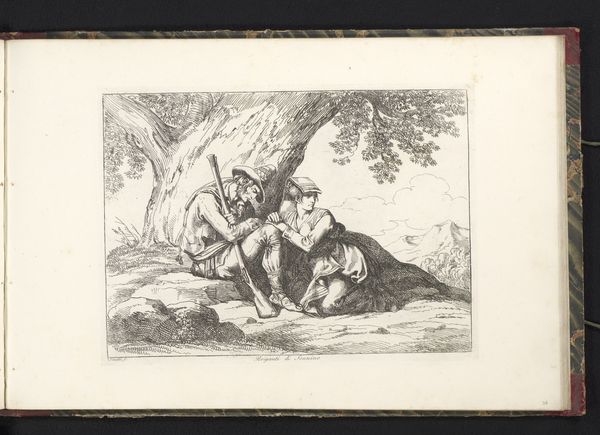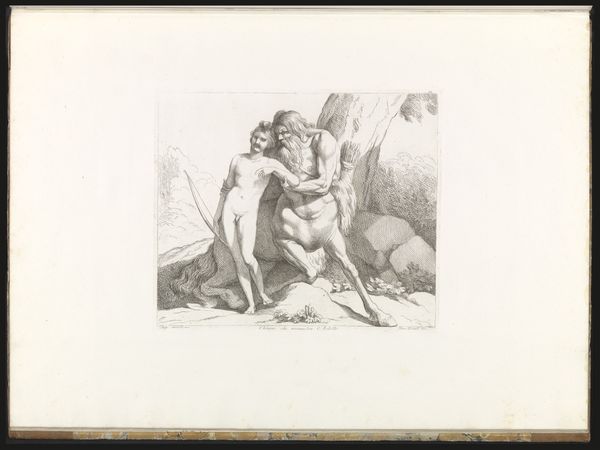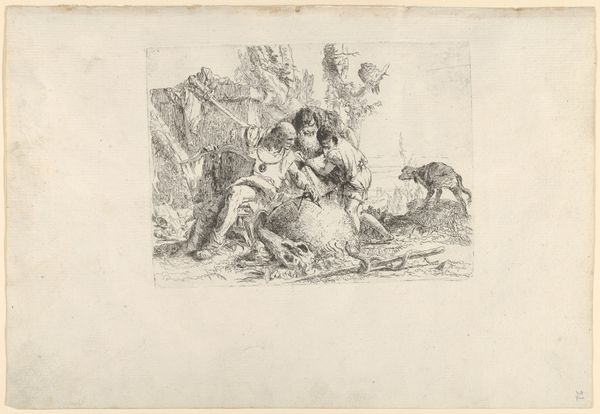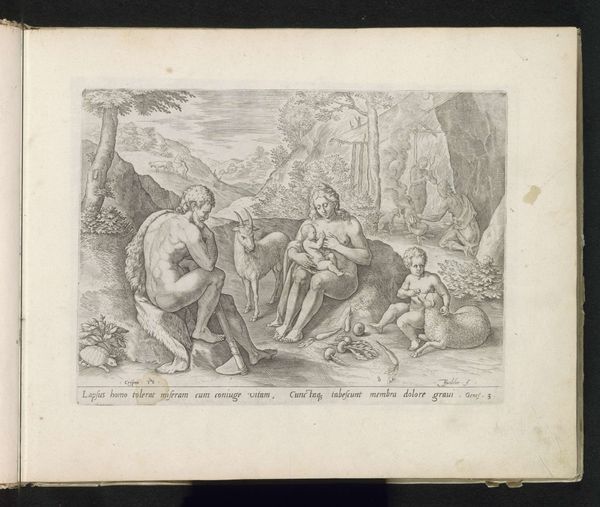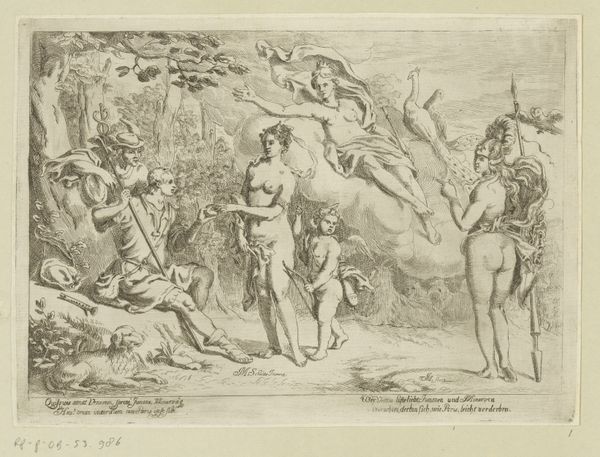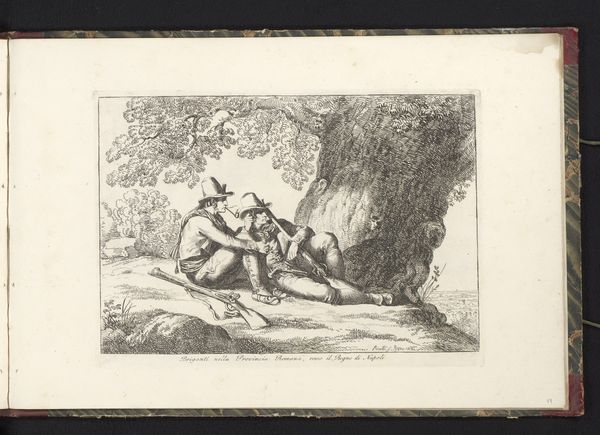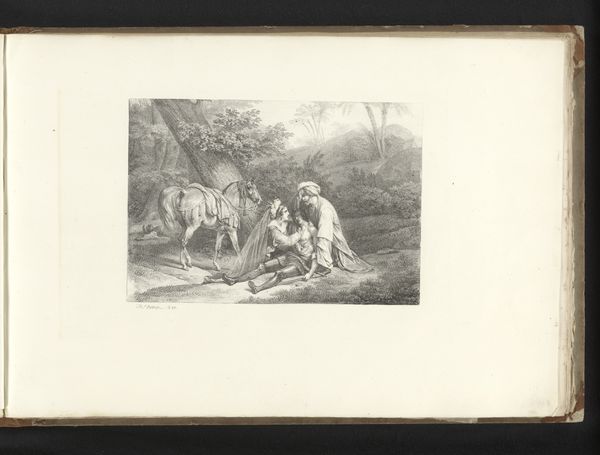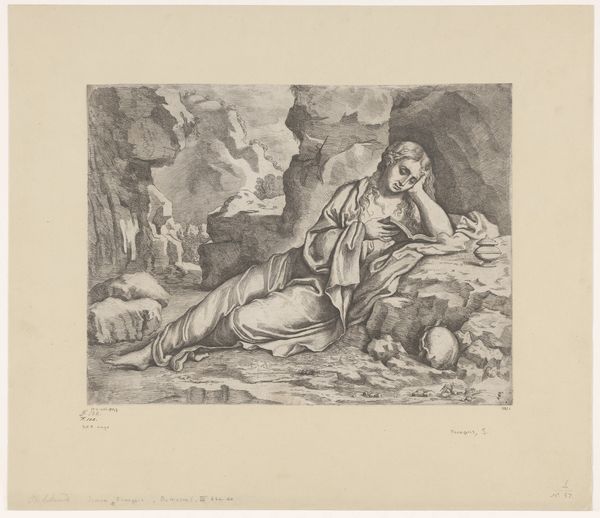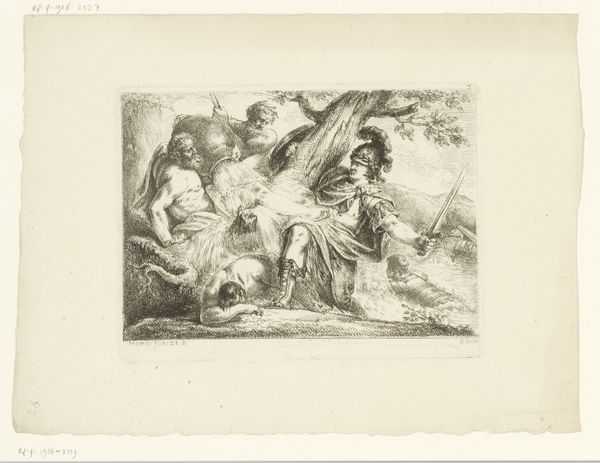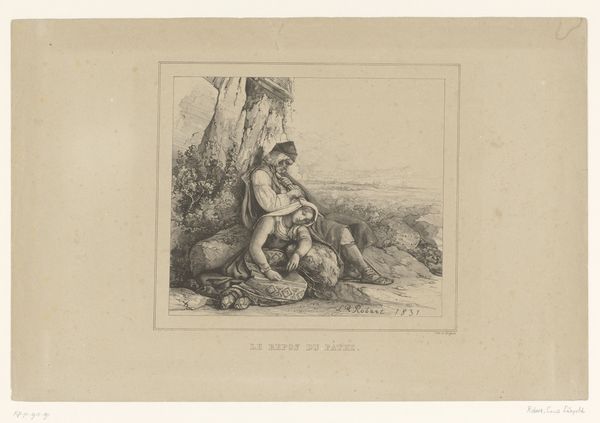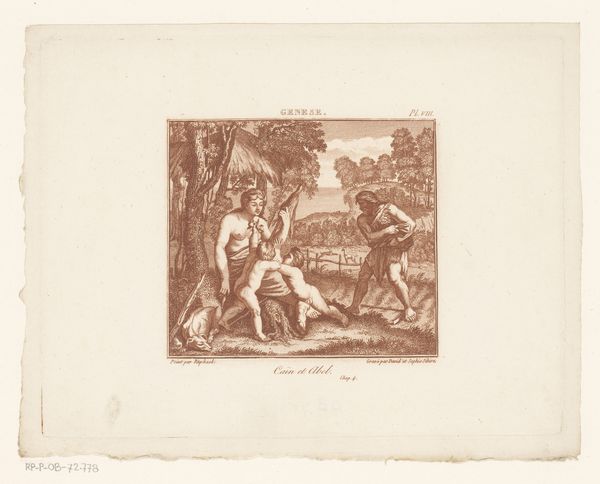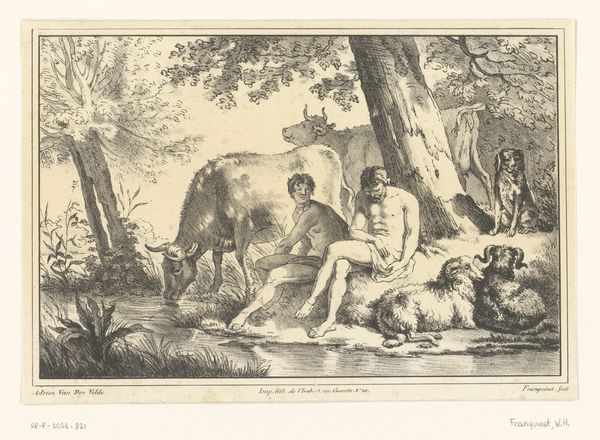
drawing, print, etching, ink
#
drawing
#
neoclacissism
#
toned paper
#
ink drawing
#
narrative-art
#
pen drawing
# print
#
etching
#
landscape
#
figuration
#
ink
#
romanticism
#
history-painting
Dimensions: height 411 mm, width 490 mm
Copyright: Rijks Museum: Open Domain
Curator: This is "Scène uit Ariosto's 'Orlando Furioso': dood van Zerbino," or, "Scene from Ariosto's 'Orlando Furioso': Death of Zerbino" by Giovanni Battista Romero, created in 1804. It's an ink and etching print, after a drawing. Editor: Immediately, what strikes me is the melancholy. The light is sparse, accentuating the limp figure, a somber and touching composition of grief, classically rendered, yet evoking a painful realism. Curator: Romero, a Neoclassical artist, taps into the emotional depths of Ariosto's epic poem. The scene captures the demise of Zerbino, cradled by Isabella, amidst a rather sparse landscape littered with martial accoutrements – armor, helmet and sword. Notice how Isabella's figure echoes that of mourning madonnas, common themes during the Romantic Era. Editor: The composition relies on strong diagonal lines leading our eye through the scene of lamentation. Also, the precise linework in the etching and crosshatching adds depth. Look at Isabella's drape—almost sculptural. And that forlorn horse. It suggests an emptiness that parallels her loss. It's all so deliberately staged, isn't it? The grief seems less raw and more… curated. Curator: True, there’s a theatricality – the hallmark of narrative paintings and prints intended for moral reflection. Romero sought to convey universal themes of love, sacrifice, and loss. Romanticism definitely crept in during the 19th century and is exemplified with emotion like death depicted with intense passion! It allows him to tug at your heartstrings in ways other works don't Editor: The medium here is vital. As a drawing reproduced as a print, we see the Neoclassical focus on line over color, emphasizing the purity of form. That linear precision lends it that characteristic clarity. However, if he wanted to convey true emotion, it should have a lot more feeling like Delacroix, but here, I feel he only scratched the surface. Curator: I can understand the longing for a work filled with color that conveys an overwhelming amount of emotion and heart, but even the absence can create depth to an artistic work and give a piece an individual quality that is all it's own. Editor: In viewing "Death of Zerbino," what is perhaps most apparent is how visual choices of line, medium, composition are harnessed for their unique emotive potential. This piece invites not only grief, but consideration of where visual aesthetics and emotion can align.
Comments
No comments
Be the first to comment and join the conversation on the ultimate creative platform.
